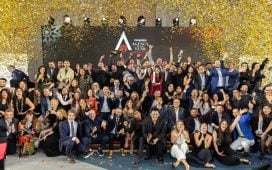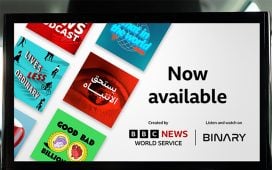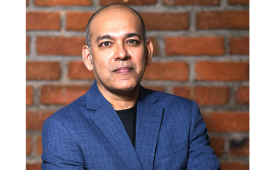
In PR, we often find ourselves juggling two realities, traditional media, which anchors credibility, and digital platforms, where speed and engagement dominate.
As campaigns stretch across TikTok, LinkedIn, and everything in between, traditional media can sometimes feel like a slower, less adaptable player in the mix. But for PR agencies in the UAE, where newspapers, magazines, TV, and radio remain critical, abandoning traditional media is not an option.
The question isn’t whether traditional media still fits into modern campaigns — it’s how.
That’s where the PR convergence-feedback loop comes in — a model I recently developed to help PR professionals navigate the complexities of blending traditional and digital media.
It reframes how we approach strategy, moving away from static, linear models and toward a flexible, feedback-driven process. This framework responds to a challenge I see daily: PR campaigns that operate in silos, with traditional media and digital efforts running parallel but rarely intersecting in meaningful ways.
The solution is to create a system where traditional media doesn’t just stand alone but feeds into and amplifies the broader campaign narrative, evolving alongside audience engagement and digital trends.
What is the PR convergence-feedback loop?
The PR convergence-feedback Loop is built on the idea that PR is no longer a one-way street. Traditional campaigns often follow a linear path — plan, execute, measure, repeat. This works well for isolated projects, but in a fragmented media environment, agility is everything. This framework introduces a cyclical model that operates across three key elements:
- Content convergence – Ensuring messaging is unified across platforms, while adapting to fit the unique nuances of each medium.
- Audience feedback integration – Using real-time feedback from audiences to refine and evolve campaigns during their lifecycle.
- Real-time optimisation – Adjusting media strategies dynamically, reallocating resources based on performance data and audience engagement.
While much of this naturally applies to digital channels, traditional media holds a critical place in the loop — not as a final deliverable, but as the foundation for campaign credibility and long-term brand building.
Traditional media as the anchor for PR campaign credibility
There’s a reason why legacy outlets like The National, Gulf News, and Khaleej Times are still the first point of reference for major announcements. Traditional media carries weight, especially in industries like government, healthcare, and banking—areas where trust is paramount.
But PR agencies can’t afford to let press releases or print features live in isolation. Coverage in traditional outlets should fuel the rest of the campaign, sparking digital conversations, feeding into influencer collaborations, and adapting to real-time audience responses.
Take Expo 2020 Dubai as an example. Traditional media drove the initial credibility of the campaign, but its success snowballed through digital engagement — amplified by influencers, social platforms, and real-time audience feedback. It’s a textbook case of how content convergence bridges the gap between legacy media and digital ecosystems.
Feedback as a driver for strategic refinement
Traditional media may provide the launchpad, but it’s audience feedback that determines the trajectory. PR professionals have long relied on circulation numbers or viewership data, but engagement doesn’t stop at readership figures anymore.
Comments, shares, and digital conversations around traditional media coverage are just as valuable.For example, during Ramadan campaigns in the UAE, brands frequently lean on TV and print to establish messaging—but it’s social media conversations that drive refinement.
If audience feedback signals a disconnect, campaign messaging can pivot midway through Ramadan to better align with cultural sentiment, ensuring relevance until Eid. This continuous feedback loop allows brands to adapt their message while remaining rooted in the authority of traditional platforms.
Optimising traditional media in real time
One of the biggest misconceptions is that traditional media is static — something you publish and move on from. But in the PR convergence-feedback loop, traditional media placements can and should be optimised mid-campaign.For example:
- A CEO interview in The National doesn’t stop at print distribution. The story can be clipped into short-form videos for LinkedIn or used as the foundation for a webinar.
- A high-performing TV segment can be re-edited into smaller snippets for Instagram or TikTok, capturing audiences who don’t engage with traditional outlets.
We saw this play out with the UAE’s Golden Visa initiative. Early announcements in traditional media laid the groundwork, but digital platforms helped distill the information, adapting content for different demographics — from high-net-worth investors to freelance creatives. The initiative succeeded in part because traditional media coverage was consistently repackaged and amplified.
Building for the future: The role of integration
In the UAE’s PR landscape, traditional media isn’t just a pillar of communication; it’s a trust-building tool that still holds significant sway. But as the lines between legacy and digital platforms blur, PR professionals must bridge the gap through intentional integration.
The PR convergence-feedback loop allows agencies to:
- Maximise the lifespan of traditional media coverage by amplifying it across channels.
- Respond dynamically to audience feedback, refining messaging in real time.
- Unify campaign narratives, ensuring consistent messaging from print to podcast to platform.
Ultimately, this approach reflects the reality of PR today. Campaigns are no longer confined to distinct channels. They exist in a state of constant evolution, where traditional media provides the foundation, and digital platforms keep the conversation alive.
As PR professionals in the region, our job isn’t to choose between traditional and digital — it’s to make them work harder, together.
By Zainab Imichi Alhassan, Managing Director, POP Communications









